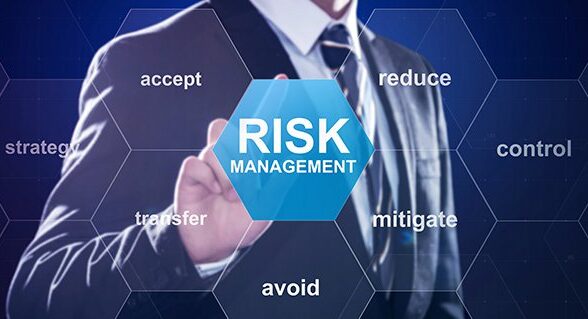In today’s interconnected business landscape, third-party relationships are essential for small businesses to streamline operations, access expertise, and drive growth. However, third-party partnerships also introduce potential risks, including data breaches, compliance violations, and reputational damage. To mitigate these risks, many organizations conduct third-party risk assessments to evaluate the security posture and compliance of their vendors and partners. In this article, we’ll explore best practices for small businesses to respond effectively to third-party risk assessment questionnaires.
Understand the Purpose:
Before responding to a third-party risk assessment questionnaire, it’s essential to understand the purpose and objectives of the assessment. Assessments may vary in scope and focus, covering areas such as cybersecurity, data privacy, regulatory compliance, and business continuity. By understanding the assessment criteria, small businesses can tailor their responses to address specific concerns and requirements.
Gather Documentation and Information:
Preparation is key to effectively responding to third-party risk assessment questionnaires. Gather relevant documentation, policies, procedures, and information related to your business’s security practices, compliance efforts, and risk management processes. This may include security policies, incident response plans, compliance certifications, and evidence of regulatory compliance.
Assign Responsibility:
Designate a responsible individual or team within your organization to oversee the completion of the risk assessment questionnaire. This individual should have a thorough understanding of your business’s operations, security practices, and compliance requirements. Assigning responsibility ensures accountability and facilitates timely responses to the assessment.
Collaborate with Stakeholders:
Collaboration with internal stakeholders and subject matter experts is essential for providing accurate and comprehensive responses to the risk assessment questionnaire. Engage relevant departments, such as IT, legal, compliance, and operations, to gather input and insights into specific areas of inquiry. Collaboration ensures that responses reflect a holistic view of your business’s risk management practices.
Be Transparent and Honest:
Transparency and honesty are paramount when responding to third-party risk assessment questionnaires. Provide truthful and accurate information, even if it means disclosing areas where your business may have gaps or weaknesses. Concealing or misrepresenting information can undermine trust with your partners and potentially lead to adverse consequences down the line.
Address Gaps and Remediation Plans:
If the risk assessment identifies areas where your business falls short of compliance requirements or best practices, be proactive in addressing these gaps. Develop remediation plans to mitigate risks, improve security controls, and enhance compliance posture. Clearly outline the steps your business will take to address identified weaknesses and establish timelines for implementation.
Maintain Documentation and Records:
Keep thorough documentation of your responses to the risk assessment questionnaire, including supporting evidence and documentation. Maintain records of communications with the assessing party, including any follow-up questions or clarifications. Documentation demonstrates diligence and accountability in your risk management efforts and can serve as evidence of compliance in future assessments.
Continuous Improvement:
Treat third-party risk assessment questionnaires as opportunities for continuous improvement and enhancement of your business’s security and compliance practices. Use the insights gained from the assessment to identify areas for improvement and implement proactive measures to strengthen your risk management posture over time.
Responding to third-party risk assessment questionnaires requires careful preparation, collaboration, transparency, and a commitment to continuous improvement. By understanding the purpose of the assessment, gathering relevant information, assigning responsibility, collaborating with stakeholders, being transparent and honest, addressing gaps, maintaining documentation, and embracing continuous improvement, small businesses can effectively navigate third-party risk assessments and demonstrate their commitment to security and compliance.
How can BraunWeiss help?
BraunWeiss can help small businesses with third-party risk assessments in several ways:
- Vendor Assessment Framework: BraunWeiss can develop a comprehensive framework for evaluating third-party vendors and assessing their risk levels. This framework may include criteria such as financial stability, reputation, security protocols, compliance with regulations, and data protection measures.
- Risk Identification: BraunWeiss can identify potential risks associated with third-party vendors, such as financial instability, operational inefficiencies, security vulnerabilities, or compliance issues. They conduct thorough assessments to uncover any areas of concern that could impact the small business.
- Due Diligence: BraunWeiss performs due diligence on third-party vendors to verify their credentials, qualifications, and compliance with relevant standards and regulations. This helps small businesses make informed decisions when selecting and engaging with vendors.
- Risk Mitigation Strategies: BraunWeiss provides recommendations and strategies for mitigating risks associated with third-party vendors. This may involve implementing additional security measures, contract clauses, insurance policies, or contingency plans to minimize potential impacts on the small business.
- Compliance Assurance: BraunWeiss ensures that third-party vendors comply with regulatory requirements and industry standards relevant to the small business. They help small businesses assess vendor compliance and address any non-compliance issues to avoid legal or regulatory consequences.
- Monitoring and Review: BraunWeiss offer ongoing monitoring and review services to track the performance and risk levels of third-party vendors over time. They conduct periodic assessments and audits to ensure that vendors continue to meet the small business’s standards and requirements.
- Documentation and Reporting: BraunWeiss documents their findings and recommendations from third-party risk assessments and provide comprehensive reports to small businesses. These reports help small businesses understand the risks associated with their vendors and take appropriate action to address them.
- Training and Education: BraunWeiss offers training and educational resources to small businesses on third-party risk management best practices. They help small businesses develop internal capabilities for assessing, monitoring, and mitigating risks associated with third-party vendors.
- Customized Solutions: BraunWeiss tailor their services to meet the specific needs and requirements of small businesses. They offer customized solutions based on the industry, size, complexity, and risk tolerance of the small business, ensuring that their third-party risk management efforts are effective and efficient.
Overall, partnering with BraunWeiss can help small businesses effectively manage and mitigate risks associated with third-party vendors, protect their interests, and ensure business continuity and success.

Leave a Reply